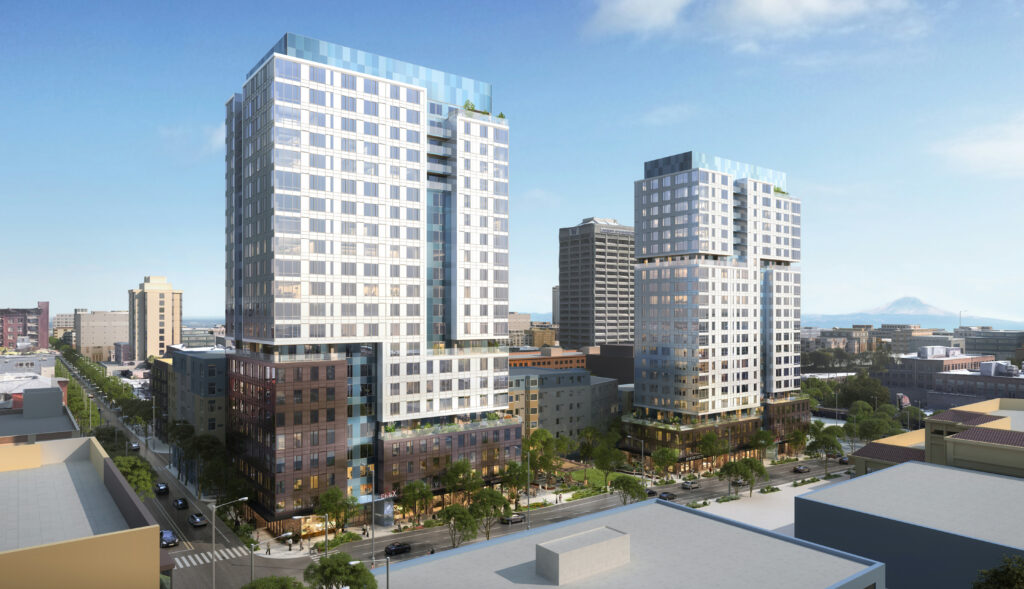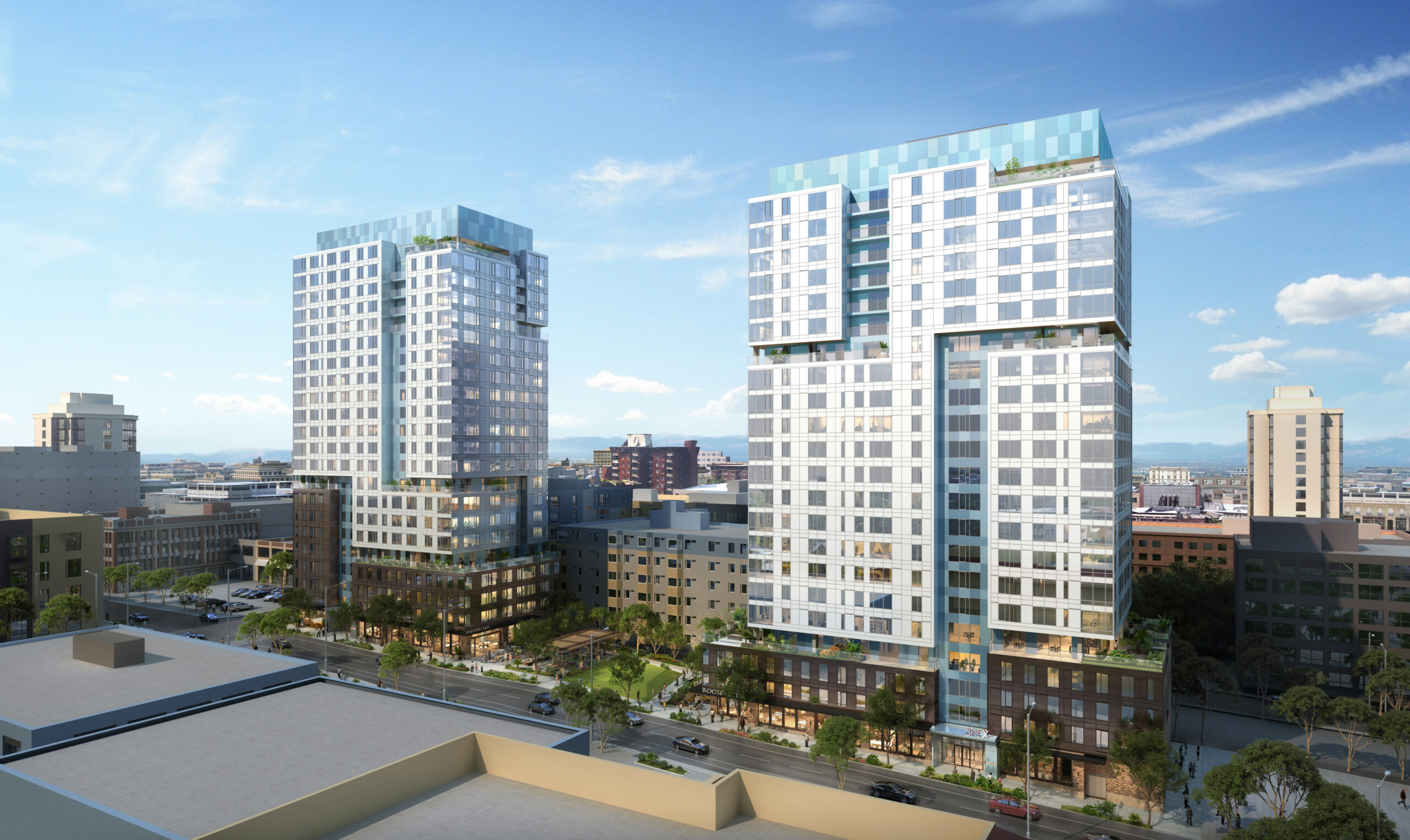Seattle’s University District could soon see the construction of a new multifamily project. A proposal for two towers that would bring hundreds of residential units to the city was presented to Seattle’s Northeast Design Review Board during a meeting on Monday, and the board voted to recommend that the design be approved by the Seattle Department of Construction & Inspections. OneLin Capital Corporation is the project developer, and the designer is MZA Architects.

The project would be located at 4522 Roosevelt Way NE and would consist of two towers, according to plans. Each tower would stand at 22 stories and primarily comprise residential space but each would also feature retail uses at the ground level. Both towers would share a central public plaza, and the proposal includes two levels of underground parking with 224 vehicle stalls.
In total, the towers plus the parking garage would be approximately 544,331 square feet, with 471,459 square feet of above grade space and a 72,872 square foot garage. The north tower has 313 units and about 1,324 square feet of retail space, while the south tower is planned for 272 units and slightly more retail space at 2,908 square feet. The project has no departures.
During a previous Early Design Guidance meeting, an “interlocking” massing option was proposed by the design team. That massing scheme uses modulations to break down the scale of both buildings, while also correlating to its surroundings. Peter Sherrill, MZA Architects design principal, said during Monday’s meeting that the board preferred that massing option during the previous meeting.
“Our primary objective was to create a destination that enhances and showcases the qualities of the dynamic and diverse university district,” Sherrill said. “To determine the overall design, we studied the urban fabric of the district and associated the primary design elements of the project to each of the key zones within the area – the U District and the U-W campus. They form a strong synergistic relationship reinforcing one another, but they differ significantly in terms of organization. This contrast influenced our planning approach for the project, which the board was supportive of in the last meeting.”
The buildings are intentionally spread to the far north and south allowing for the best access to light and views to the north property as well as a connected pedestrian experience on the ground plane, according to project plans. The ground plane and its connectivity to Roosevelt is the primary organizing element of the project, and the building lobbies are set back from the property line to provide a wider feel at the sidewalk and act as a transitional “porch.”
“The project is designed to bring the U District DNA from the streetscape up into the city skyline,” the proposal shows. “It creates a gathering hearth that enhances the pedestrian experience at the edge conditions on Roosevelt Way. Adapting to the collegiate, eclectic, and energetic atmosphere of the near University of Washington, the project aims to express and amplify the same vitality in its formative language.”
The board was overall pleased with the design and noted that the application was more refined and seemed more intentional. Feedback from board members included making sure that the modulation depth at the project’s south facade stayed the way it was designed, adding doors into the retail space from Roosevelt Way as long as the grading allowed for it and while the board thought the massing overall at the south facade was fine, members recommended studies to integrate some contemporary artwork or adding some texture or patterning into the blank concrete on that side.
On the north facade at the northwest corner, board members also discussed that they would like to see something that draws people toward the door at that portion of the project, such as benches or signage. Board members pointed out that the link between the two towers was positive and strong. Officials also noted that there are no real conditions attached to the design, just studies and recommendations.

